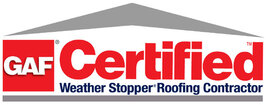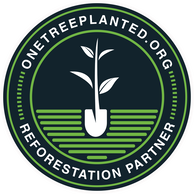|
The primary function of roofing materials is to protect a house from the elements. The following analysis examines the relative economic, energy, and environmental impacts of the following roofing options: organic asphalt shingles, fiberglass asphalt shingles, clay and concrete tiles, standing seam metal roofing, metal shingles and tiles, wood shakes and shingles, composite shingles (plastic and/or rubber), and fiber cement shingles.
General Recommendations When balancing first cost, lifetime cost, durability, and availability, metal roofing systems come out ahead of most alternatives. Metal roofing typically lasts longer than asphalt shingles and weighs less than most other roofing products. Metal roofing can be recycled easily at the end of its lifespan and is manufactured with a high recycled content. These factors contribute to a more favorable environmental impact when compared to other roofing options. In addition, metal roofs with high reflectivity can help reduce energy use by reducing thermal gain in the summer. This is generally more important in southern areas of the U.S., where cooling dominates home energy use. Wood shingle roofs from sustainably harvested sources are a strong alternative, although slightly more expensive than metal options. Wood roofs may not be appropriate for areas prone to wildfires. Although asphalt shingles have the lowest first cost, they require more frequent replacement than other options. This typically results in higher costs over time. Asphalt shingles also make a significant contribution to landfills. Cement shingles are a good alternative when durability is a primary concern. In selecting roofing materials, consider their weight and whether additional structure is required. If so, factor the environmental impacts of the increased structure into the overall impacts of the roofing. Also consider whether a particular roofing material is appropriate for the type of roof. For example, many asphalt shingles are warranted for use on cold roofs, but not hot roofs. Cold roofs have a ventilated attic space that is not conditioned or a ventilated air space between the insulation and roofing. Hot roofs include SIP roofs and other roof types without a ventilated air space between the roofing and the insulation. Finally, consider how the roofing material affects the quality of water falling on it. For example, will it contribute sediment that may clog gutters, rainwater collection, or catchment systems? Environmental Context Roofing systems with shorter lifespans (asphalt shingles and some wood shingles and shakes) generate more negative impacts over time because they must be replaced more frequently. Wood products, in general, have lower environmental impacts than metals, but if they come from old-growth forests or forests that are not managed sustainably, the impacts are high as well. Wood products from certified forests reduce the impacts of erosion, soil loss, and habitat destruction. Natural slate and clay or cement tiles are expensive and heavy, often requiring additional structural support. However, they have an extended lifecycle, which can reduce their overall impacts when paired with a long-lasting building. Both fiberglass and organic asphalt shingles are made from petroleum-based products and do not presently contain much recycled content, except in the paper or fiberglass base. However, programs for recycling asphalt shingles (into road asphalt, for example) may be available at the local level. Fiber-cement products have high embodied energy and create significant negative impacts related to air and water pollution from their extraction phase through manufacture and transport. However, they are very durable. When they incorporate waste or low-quality wood fiber products, they can produce lightweight, long-term installations that reduce negative impacts when compared with shorter lifespan products. Source: http://www.mnshi.umn.edu/kb/scale/roofing.html
0 Comments
Leave a Reply. |
OUR COMPANYMN LIC#CR681753 |
SERVICES |
SOCIAL |
The following Trademarks: Owens Corning™, SureNail® Technology, Duration®, Duration STORM® Triple Layer Protection®, WeatherGuard®, TruBond® & TruDefinition® are all registered Trademarks of Owens Corning® http://www.owenscorning.com/.
2024 All Rights Reserved. EcoRoofing MN, Residential Roofing Company
2885 Country Drive Suite 110 Saint Paul, MN 55117 | (651) 797.8621
2885 Country Drive Suite 110 Saint Paul, MN 55117 | (651) 797.8621

 RSS Feed
RSS Feed






